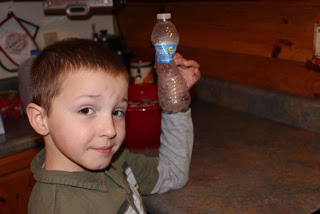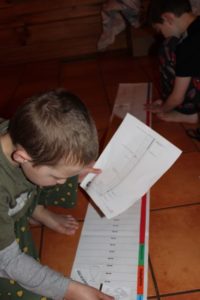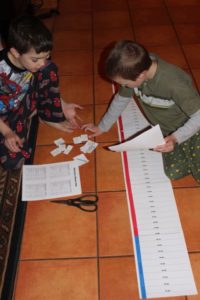The hook: Felix Baumgartner’s record-breaking freefall skydive. Although he’s only up in the stratosphere, it looks like he’s out in space beyond our atmosphere. This video is just so amazing.
But not only that. Every time I see a picture of what’s beyond us, my mind goes numb. I can’t even take it in. Stuff like this makes me feel itty-bitty in this great big universe, and it makes God and His incredible design look… infinitesimally glorious!
The heavens declare the glory of God; the skies proclaim the work of his hands. Psalm 19:1
And with that… we started. We started by reading the first three free chapters (about our amazing atmosphere) of Voskamp’s A Child’s Geography and then made a paper model of the atmosphere to better understand each layer. (By the way, there are many activities in the download with the paper model instructions, including some great math tie-ins for upper elementary.) Coupling this activity with a fabulous diagram of the atmosphere, we later sketched in Mt. Everest, clouds, meteors, aurora, and ozone on our paper model in addition to all the NASA aircraft. We even added a picture of Felix Baumgartner. And then… we hung it on the wall.
We viewed some on-line interactives of the atmosphere, along with a few videos, all of which are listed in our list of Earth Science resources.
This simple atmospheric pressure experiment worked much better than balancing a balloon on a stick.



Although I have a background in petroleum engineering, my knowledge stops at the lithosphere. So… we all learned:
- What ozone is and the difference between good ozone and bad ozone.
- How the ionosphere affects radio waves.
- What causes the aurora borealis.
- Where and why shooting stars blaze.
- The function of each layer of the atmosphere.
- What types of aircraft/spacecraft can be found in each layer of the atmosphere.
What a great investigation into the earth’s atmosphere!




